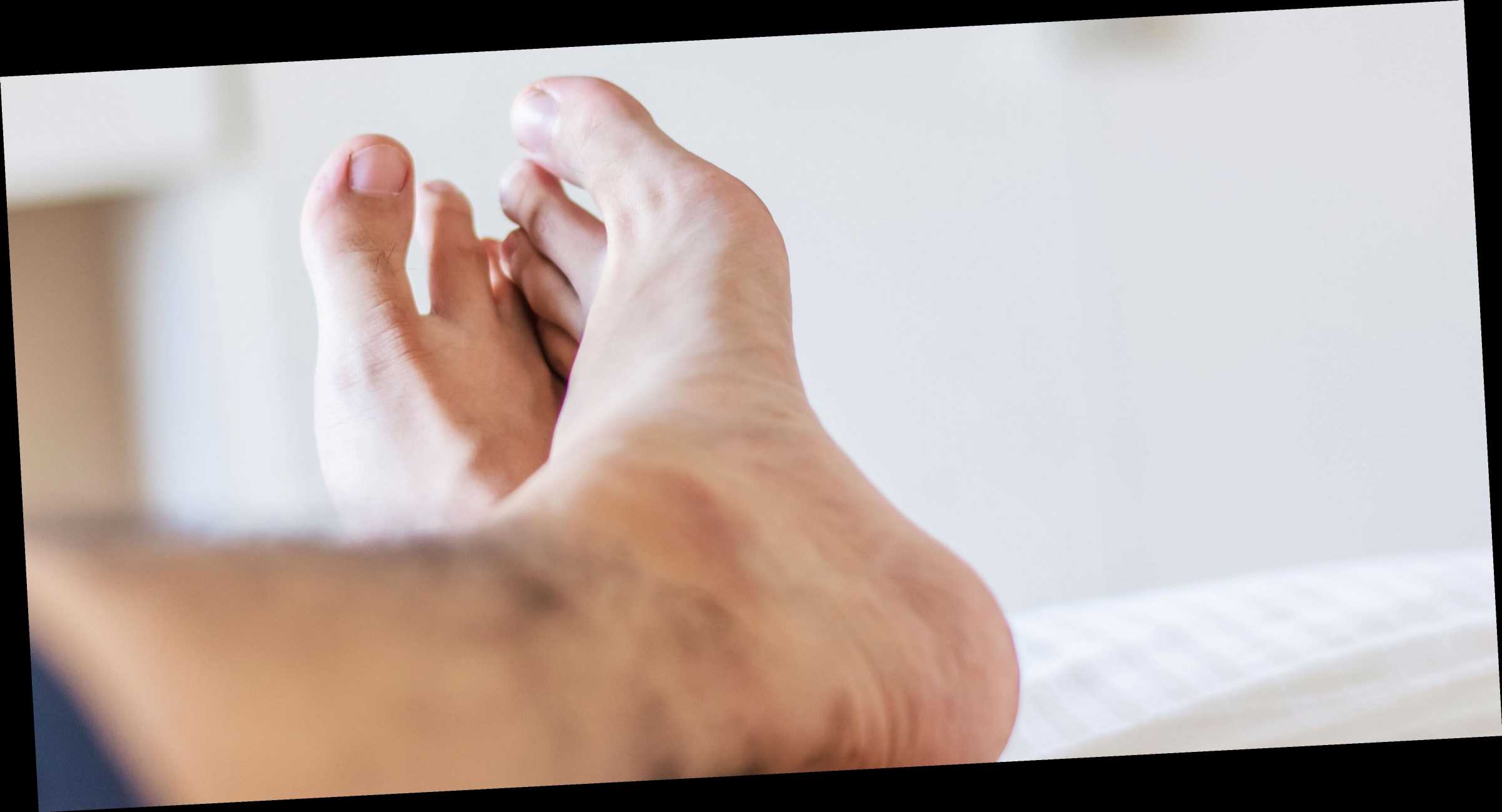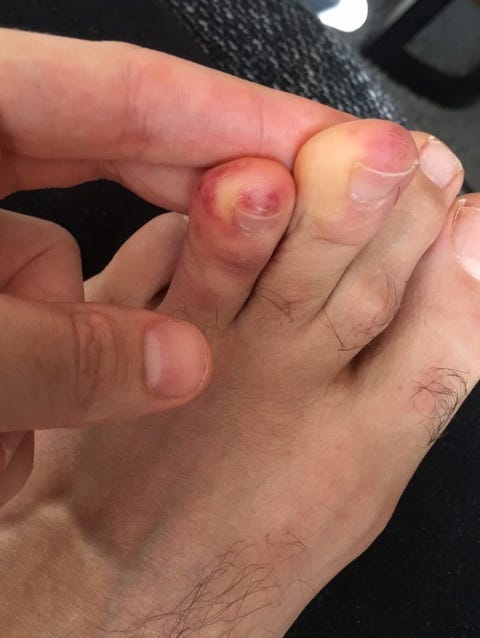Symptoms of the novel coronavirus disease, or COVID-19, aren’t only limited to hallmark respiratory problems. There are a host of other seemingly unrelated issues that could indicate an infection.
Dermatologists have noticed skin rashes can be symptoms of a coronavirus infection, as well as what’s become colloquially known as COVID toes: Pinky, red sores on the toes that are inflamed, itchy, and can turn purple.
Throughout the coronavirus pandemic, dermatologists have been updating a “registry” that’s kept by the American Academy of Dermatology with potential COVID-related skin conditions they’re seeing in their practice. USA Today reports that about half of the 300 cases currently in the registry are related to COVID toes.
It’s actually common for symptoms of an internal infection to show up on your skin, explains New York City dermatologist Elizabeth Hale, M.D., co-founder of Complete Skin MD. “The skin is a stage where you often can see what’s playing out in the rest of the body,” she explains. “In this case, inflammation the virus may be causing could be manifesting on the skin.”
What do COVID toes look like?
“’COVID toes’ present with red-purple bumps over the toes which can be painful or itchy,” says Jason H. Miller, M.D., FAAD, of Schweiger Dermatology Group in Freehold, New Jersey. “This rash resembles a rash called pernio, which is generally seen in cold, damp weather, but is now being seen much more frequently than expected, even in areas that are warm.” Pernio also goes by the name “chilblains.”
FirstDerm.com
What causes COVID toes or rash?
“We’ve been seeing some COVID-induced vasculitis, or inflammation of the blood vessels,” says Dr. Hale. Since the vessels in the toes are smaller than, say, the vessels in the trunk, issues with inflammation may show up there first, she explains. The redness may also be due to micro-clots in the blood that could be associated with this disease; it’s not clear yet exactly what’s causing this symptom.
Doctors are also seeing another pattern of rash associated with COVID-19 called livedo reticularis. “It leads to a net-like red rash on the legs after blood vessels are inflamed,” explains Dr. Miller.
What should you do if you think you’re showing symptoms?
“A rash on the fingers and/or toes, particularly red or purple bumps that are cold and painful, should prompt a consultation with a board-certified dermatologist,” says Shari Lipner, M.D., associate professor of clinical dermatology at Weill Cornell Medicine. “This rash may be a sign of COVID-19 infection, even in the absence of other symptoms, including fever, cough, shortness of breath, and loss of taste and/or smell. Many of these patients are asymptomatic and could be unknowingly spreading the virus to others.” A board-certified dermatologist can diagnose what the rash is, ruling out other possibilities.
If you have a rash, should you get tested for COVID-19?
That’s not crystal clear. “Studies are still being done about whether these patients should be tested, as many could be later in the course when a nasal swab could be negative,” explains Dr. Miller.
How should you treat COVID toes?
“In most cases the rash is asymptomatic or mildly painful. The patient may benefit from elevation of their hands and/or feet, keeping them warm, and taking oral and topical anti-inflammatories,” Dr. Lipner says. But she cautions you to treat the symptoms only once you’ve called your doc to zero in on exactly what your skin rash is.
What if the rash isn’t on your toes?
Other rashes are being seen with COVID-19. “In an early study from Italy, up to 20% of patients were found to have some sort of rash, although the findings were not specific,” says Dr. Miller.
And other types of skin rashes have been seen with COVID-19 as well. That’s not entirely unexpected, as other viral illnesses can leave a nonspecific rash on the trunk and back. These can occur even after the illness, explains Dr. Hale.
Other reasons you might have a rash right now
“It’s well known that the skin and the psyche are very interconnected,” says Dr. Hale. So it wouldn’t be unlikely for skin issues to be tied to increased stress.
In addition, “I want to remind people that because of the frequent handwashing and frequent use of hand sanitizer, I’m getting a lot of calls about dry, irritated fingers and wrists,” she says.
Of course, the key isn’t washing your hands less; it’s moisturizing more. “I recommend using a good moisturizer, like Cetaphil or Eucerin, immediately after washing,” says Dr. Miller. “ A thicker ointment such as Vaseline or Aquaphor can be used under cotton gloves at night if the dryness persists.”
Most importantly, if you do see a new spot or a changing spot on your skin, don’t just stress about it—see a board-certified dermatologist, says Dr. Lipner. “Understandably, many people are anxious, and many doctors have closed their offices or are seeing a limited number of patients. Many dermatologists have the capability to see patients using telemedicine.”
Source: Read Full Article


